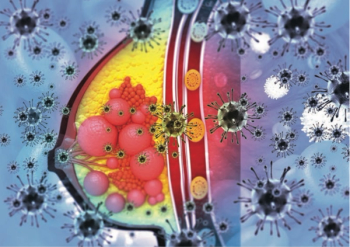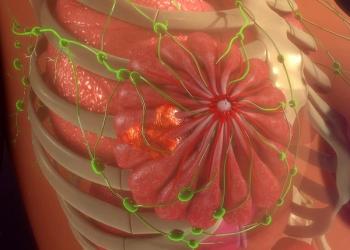
Extended Follow-Up May Elucidate How ctDNA Impacts RMC-6236 PDAC Outcomes
Almost all patients evaluable for efficacy reported a decrease in ctDNA when treated with daraxonrasib for RAS-mutant pancreatic ductal adenocarcinoma.
CancerNetwork® spoke with Ignacio Garrido-Laguna, MD, PhD, MBA, professor of Oncology and co-leader of the GI Oncology Multidisciplinary Disease Group at the University of Utah Huntsman Cancer Institute, about how circulating tumor DNA (ctDNA) changes in patients who receive daraxonrasib (RMC-6236) may inform further clinical decision-making following a poster presentation of findings from a phase 1 trial (NCT05379985) he gave at the
Garrido-Laguna began by expressing that the study was a phase 1 trial, and that further research was needed to warrant a definitive answer as to how ctDNA changes may inform clinical decision-making. He further expressed that there were not sufficient data relating to whether patients with certain characteristics, such as those who had a molecular response, had a better response based on ctDNA positivity.
Additionally, he explained that almost all patients on study were reported to have a decrease in ctDNA, with approximately 50% experiencing complete ctDNA eradication. Additionally, many patients who experienced some molecular response reported decreasing ctDNA. Garrido-Laguna then expressed that future follow-up would help clarify how these findings may translate to improved outcomes for patients with stable disease.
Findings from the study revealed a benefit among patients classified as having KRAS G12X mutations vs those identified as having RAS mutations. For patients treated with 300 mg of daraxonrasib, the median progression-free survival (PFS) was 8.8 months (95% CI, 8.5-not evaluable [NE]) vs 8.5 months (95% CI, 5.9-NE) in the respective groups. In those treated with 160 to 300 mg of daraxonrasib, it was 8.5 months (95% CI, 5.3-11.7) vs 7.6 months (95% CI, 5.9-11.1).
An overall survival (OS) benefit was also observed among those identified with KRAS G12X mutations vs RAS mutations. For those treated with 300 mg of daraxonrasib, median OS was NE (95% CI, NE-NE) vs NE (95% CI, 8.5-NE) with 6-month OS rates of 100% and 97% (95% CI, 79%-100%), respectively. In patients treated with 160 to 300 mg of daraxonrasib, the median OS was 14.5 months (95% CI, 8.8-NE) and 14.5 months (95% CI, 8.8-NE), with 6-month OS rates of 89% (95% CI, 70%-97%) and 91% (95% CI, 71%-96%), respectively.
Transcript:
It is too early [to answer] that. This is a phase 1 trial, and that means that we need [further research] to understand this better. For instance, something we have not done in the data that we have presented is trying to understand if patients who have stable disease have a [better] response based on ctDNA. Do patients with stable disease that do not have a molecular response or decrease in the ctDNA [have longer PFS]?
What we can tell from the data is nearly everyone had some decrease in ctDNA. Over 90% of patients had some molecular response, some decreasing in ctDNA. [Approximately] 50% of patients had complete eradication of ctDNA. That is interesting and promising. How that translates to improved outcomes for patients with a stable disease is something we will need to understand with future follow-up.
Reference
Garrido-Laguna I, Wolpin B, Park W, et al. Safety, efficacy, and on-treatment circulating tumor DNA (ctDNA) changes from a phase 1 study of RMC-6236, a RAS(ON) multi-selective, tri-complex inhibitor, in patients with RAS mutant pancreatic ductal adenocarcinoma (PDAC). J Clin Oncol. 2025;43(suppl 4):722. doi:10.1200/JCO.2025.43.4_suppl.722
Newsletter
Stay up to date on recent advances in the multidisciplinary approach to cancer.

















































































